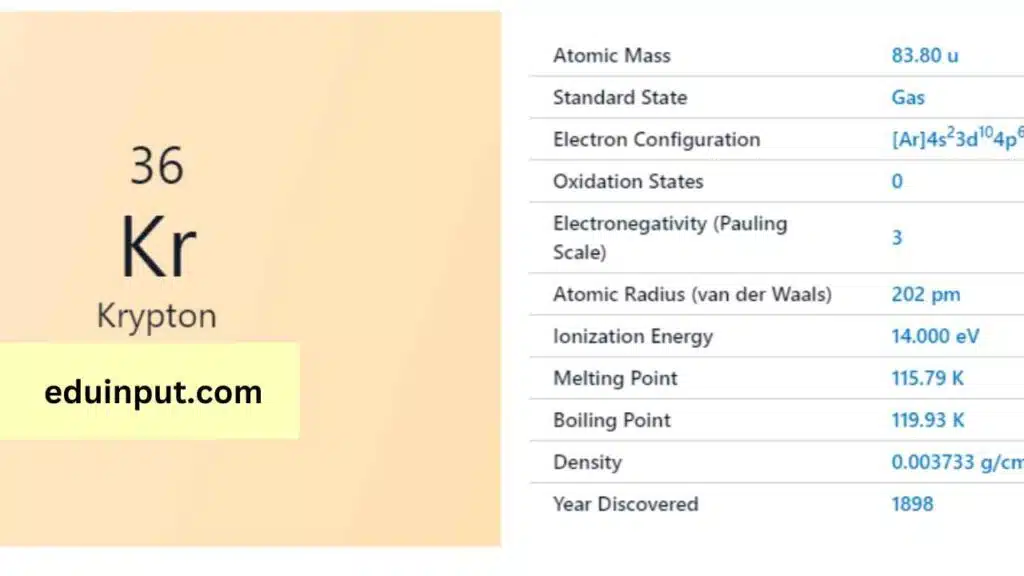Krypton-Discovery, Properties, And Applications
Krypton is a chemical element with the symbol Kr and atomic number 36. It belongs to the group of noble gases in the periodic table. It is colorless, odorless, tasteless, and non-toxic. Its name comes from the Greek word kryptos, meaning hidden. It is a rare gas that is present in the Earth’s atmosphere in trace amounts.

| Property | Value |
| Name | Krypton |
| Symbol | Kr |
| Atomic number | 36 |
| Relative atomic mass (Ar) | 83.79 g |
| Standard state | Gas at 298 K |
| Appearance | Colorless |
| Classification | Non-metallic |
| Group in periodic table | 18 |
| Group name | Noble gas |
| Period in periodic table | 4 |
| Block in periodic table | p |
| Shell structure | 2.8.18.8 |
| CAS Registry | 7439-90-9 |
Discovery
Krypton was discovered in 1898 by the British chemists Sir William Ramsay and Morris Travers. They discovered it while studying liquefied air.
Physical Properties
Krypton is a colorless and odorless gas. It has a melting point of -157.37°C and a boiling point of -153.22°C. It is denser than air and is present in the Earth’s atmosphere in trace amounts. It is a non-reactive gas and does not react with other elements. It emits a bright white glow when an electric current is passed through it.
Chemical Properties
Krypton is a noble gas and is highly unreactive. It does not react with other elements to form compounds except under extreme conditions. It has no known biological role and is not known to be toxic.
Facts
- Krypton is used in some types of high-speed photography.
- Krypton is also used in lighting, such as in fluorescent lamps and high-intensity discharge lamps.
- Krypton-85, a radioactive isotope of krypton, is used for dating ancient groundwater.
Applications
Krypton is used in a variety of applications, including:
- High-speed photography
- Lighting
- Gas mixtures for lasers
- Research and analytical applications
- Dating ancient groundwater







Leave a Reply